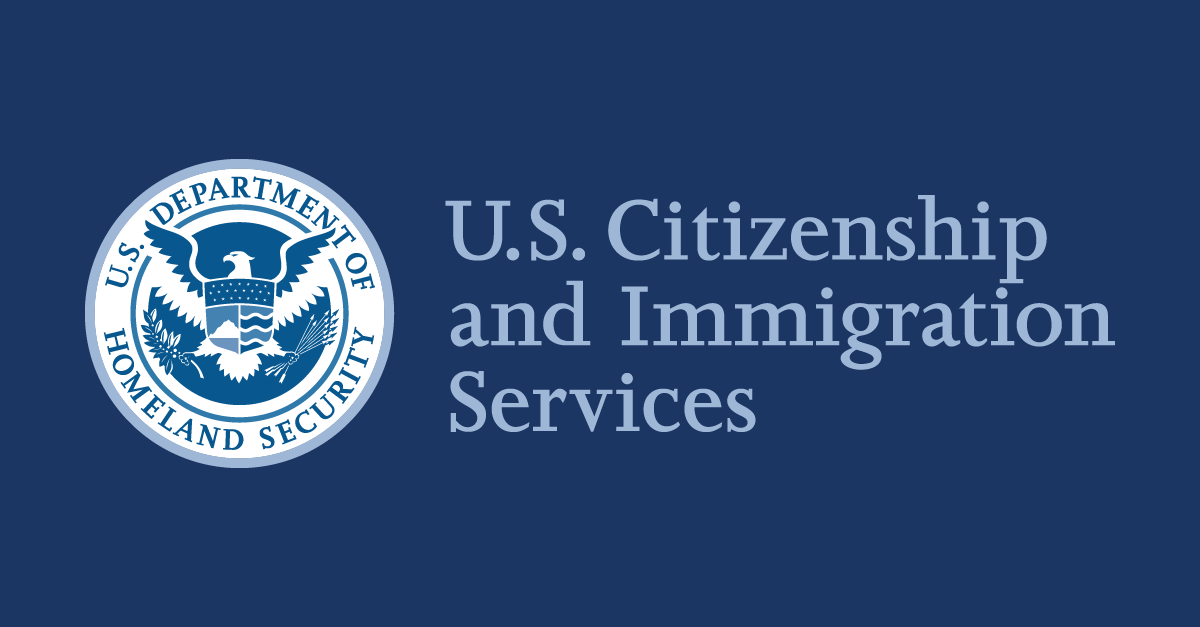USCIS Updates Child Status Protection Act (CSPA) Age Calculation for Certain Adjustment of Status Applicants:
—————-

U.S. Citizenship and Immigration Services has issued guidance in the USCIS Policy Manual to update when an immigrant visa number “becomes available” for the purpose of calculating a noncitizen’s age in certain situations under the Child Status Protection Act (CSPA).
For a child to obtain lawful permanent resident status in the United States based on their parent’s approved petition for a family-sponsored or employment-based visa, the child generally must be under the age of 21. If the child turns 21 and “ages out” during the immigration process, the child generally is no longer eligible to immigrate with the parent based on the parent’s petition.
Congress enacted the CSPA to protect certain noncitizen children from losing eligibility to obtain lawful permanent resident status based on an approved visa petition by providing a method to calculate the child’s age that considers when an immigrant visa number “becomes available.”
The Department of State’s Visa Bulletin is used to determine when a visa number becomes available. The Visa Bulletin has two charts – the Dates for Filing chart and the Final Action Date chart. Under the previous CSPA guidance, USCIS considered a visa available for purposes of the CSPA age calculation based only on the Final Action Date chart, even if a noncitizen could apply for adjustment of status using the earlier date in the “Dates for Filing” chart. This USCIS policy change is effective immediately and applies to pending applications. Therefore, some noncitizens with a pending application may now have a CSPA age that is under 21 based on this change. For example, between October and December of 2020, certain noncitizens were permitted to file their adjustment of status applications under the Dates for Filing chart of the Visa Bulletin. However, the Final Action Date chart never advanced sufficiently for their applications to be approved. These noncitizens filed their adjustment of status applications with the requisite fee without knowing whether the CSPA would benefit them.Under this new guidance, USCIS will now use the Dates for Filing chart to calculate these noncitizens’ ages for CSPA purposes, which provides these noncitizens with more certainty about their eligibility to adjust status. If these noncitizens are eligible to adjust status because of the change in policy and they have filed for adjustment of status, they will also be eligible to apply for employment and travel authorization based on their pending adjustment of status application, and they generally will not lose previously issued employment or travel authorization.Noncitizens may file a motion to reopen their previously denied adjustment of status application with USCIS by using Form I-290B, Notice of Appeal or Motion. Noncitizens must generally file motions to reopen within 30 days of the decision. For a motion filed more than 30 days after the denial, USCIS may, in its discretion, excuse the untimely filing of the motion if the noncitizen demonstrates that the delay was reasonable and was beyond the noncitizen’s control.This Policy Manual update will not prevent all children from aging out before an immigrant visa is available to them, nor will it prevent children from losing nonimmigrant status derived from their parents upon reaching the actual age of 21. USCIS continues to explore all options available under the law to aid this population. For example, the Department of Homeland Security regulatory agenda includes an anticipated notice of proposed rulemaking on improving the regulations governing adjustment of status to lawful permanent residence and related immigration benefits.
For details, visit https://www.uscis.gov/newsroom/alerts/uscis-updates-child-status-protection-act-cspa-age-calculation-for-certain-adjustment-of-status.
USCIS Announces Additional Mail Delivery Process for Receiving ADIT StampRelease Date
03/16/2023

Lawful permanent residents may receive temporary evidence of their lawful permanent resident status by mail rather than physically visiting a field office to receive an Alien Documentation, Identification and Telecommunication (ADIT) stamp (also known as an I-551 stamp).Lawful permanent residents are entitled to evidence of status and may require temporary evidence of their status in the form of an ADIT stamp if:They do not have their Green Card; or Their Form I-90, Application to Replace Permanent Resident Card (Green Card), Form I-751, Petition to Remove Conditions on Residence or Form N-400, Application for Naturalization, is still pending adjudication and their Green Card and extension notice have expired.
When lawful permanent residents call the USCIS Contact Center to request temporary evidence of status, an immigration services officer will verify their identity, their physical mailing address, and whether that address can receive UPS or FedEx express mail. They will then either schedule an in-person appointment for the lawful permanent resident, if needed, or submit a request to the USCIS field office to issue the ADIT stamp. If an in-person appointment is not needed, the USCIS field office will review the request for temporary evidence and mail the applicant a Form I-94 with ADIT stamp, DHS seal, and a printed photo of the lawful permanent resident obtained from USCIS systems.USCIS may issue temporary evidence of status in the form of an ADIT stamp. USCIS determines if the requestor should receive an ADIT stamp and has the discretion to determine the validity period based on the lawful permanent resident’s situation (not to exceed one year, unless specified otherwise by regulation or policy).Some lawful permanent residents will still need to appear in person at a USCIS field office to receive temporary evidence of their status, including those who have urgent needs, do not have a useable photo in USCIS systems, or whose address or identity cannot be confirmed.The new process will allow USCIS to issue temporary evidence of lawful permanent resident status in a timely way without requiring a scheduled appointment at the field office, thereby reducing the burden on our applicants and increasing availability of field office resources.
For Details, Visit https://www.uscis.gov/newsroom/alerts/uscis-announces-additional-mail-delivery-process-for-receiving-adit-stamp





Leave a Reply